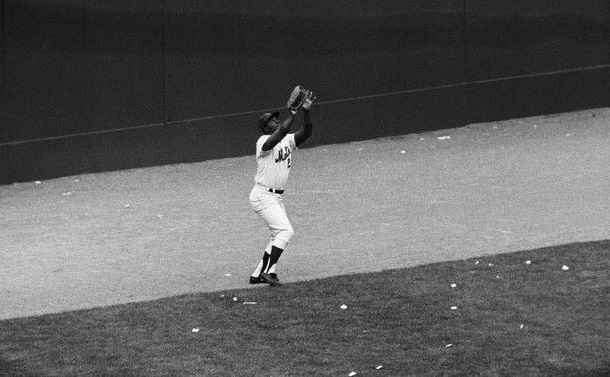
In April 1969, humans were hundreds of thousands of miles away from setting foot on the moon just as the New York Mets seemed far away from a World Series title.
By October 15, both distances had been covered and two feats once thought of as miracles were achieved.
The Mets—cellar dwellers for the better part of their first seven years—headed into Game 5 on the brink of an accomplishment registering as much awe July’s moon landing.
Even 100 regular-season wins and a sweep of the Atlanta Braves in the NLCS did not convince skeptics that New York was capable of toppling the 109-win Orioles in the World Series.
Despite dropping Game 1 in Baltimore, the magic refused to fade. Three straight wins turned skeptics into believers. And now a win away, the elements bringing the Mets to this juncture — superb starting pitching and timely hitting — carried them to the top.
But fate intervened once more, with the Orioles up 3-0 and poised to take the series back to Baltimore. The first pitch from Dave McNally to start the bottom of the sixth dove in on Cleon Jones and rolled toward the Mets’ dugout.
Jones went up the first base line thinking it hit him in the foot before home plate umpire Lou DiMuro called him back. Hodges stoically approached DiMuro and presented what turned out to be indisputable evidence: a ball with a small smudge of shoe polish. DiMuro was convinced. Jones was awarded first base.
Soon to be named MVP, Donn Clendenon stepped in and belted his third homer of the series to pull New York to within a run. Al Weis, emblematic of the unlikely nature of the Mets’ unexpected success, delivered in the seventh with a game-tying home run — the only round-tripper he hit at Shea all year — to finish off a fabulous .455 batting average over the five games. Two doubles and two Oriole errors in the eighth led to a 5-3 Mets’ lead.
It was an advantage the Mets’ superb big-game pitcher would protect. Through three innings, Jerry Koosman had allowed four hits and three runs. He yielded just one hit the rest of the way while his hitters mounted their comeback.
Koosman’s pitch in the top of the ninth to O’s second baseman (and future Mets’ manager) Davey Johnson was sent to deep left field. Jones, on the warning track, knelt as he secured the clinching out almost as if to pay respect to the heavens. It was one of the franchises’ iconic images, as was Koosman jumping into the arms of catcher Jerry Grote as the masses congregated on a Shea Stadium turf about to be torn to shreds.
What had been inconceivable in April was reality in October. One hundred-to-one odds to win it all when the season began, now the Mets were World Champions.















